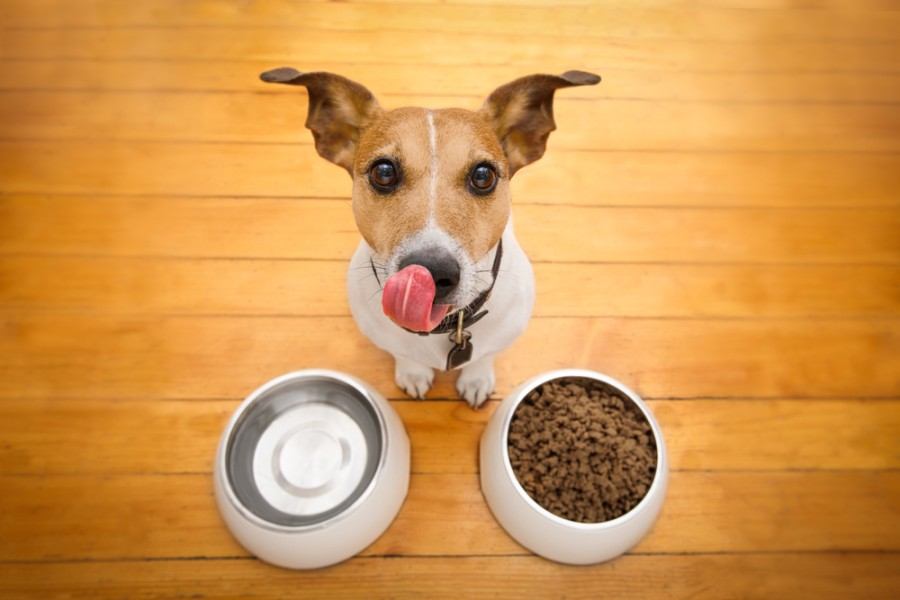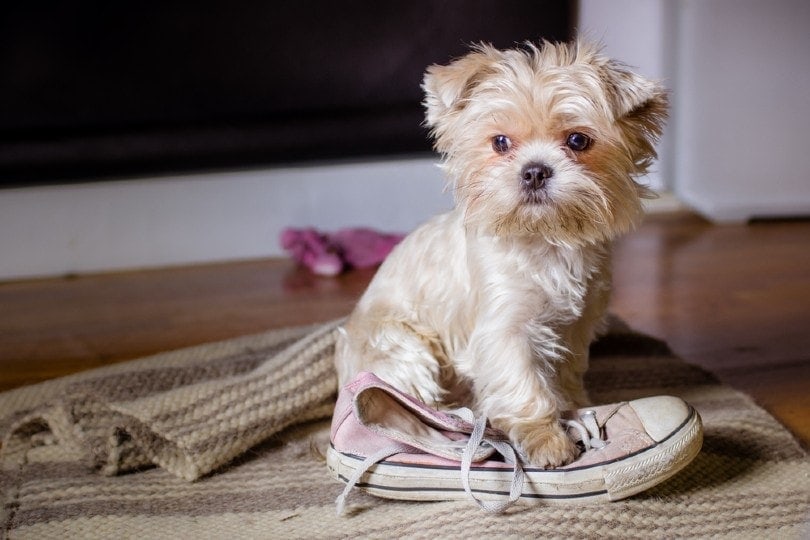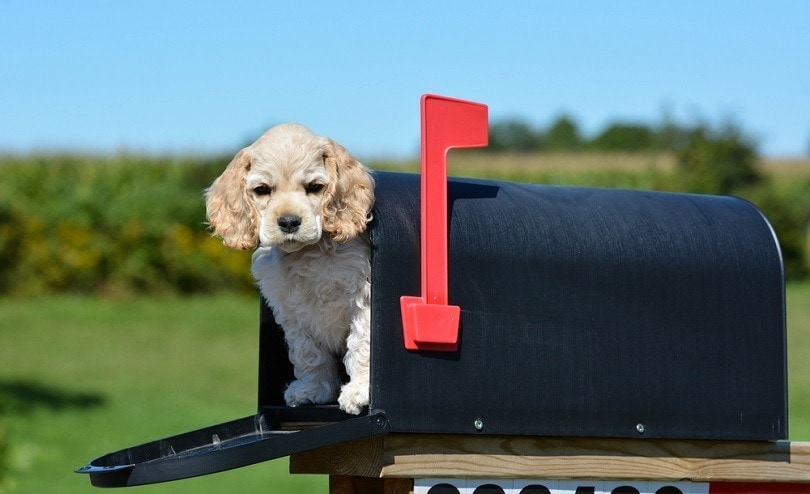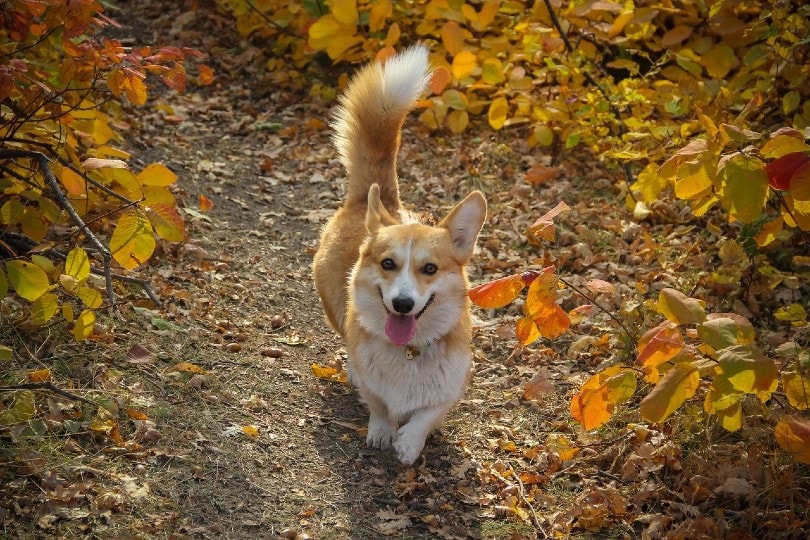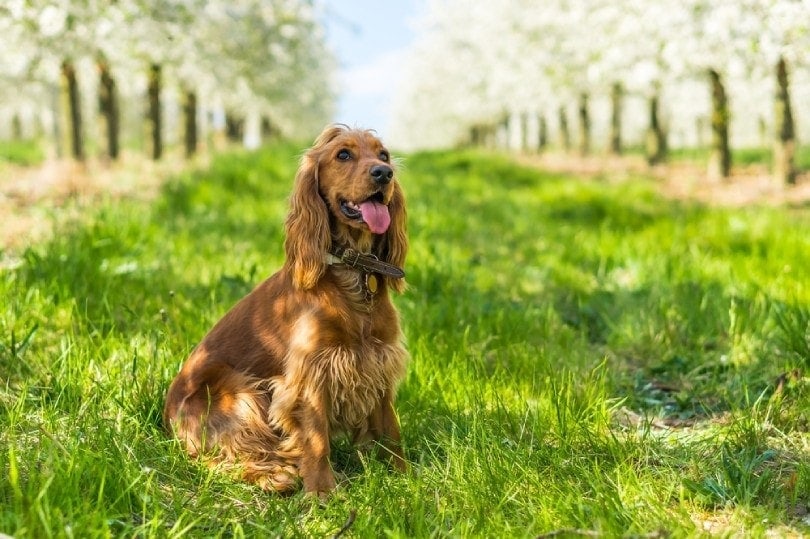The ingredients contained in your dog’s food are vital to their health and well-being, and this is the number-one factor in making sure your pooch lives a happy and healthy life. However, many pet parents overlook the storage of their dog’s food, and rancid or moldy food can have potentially harmful effects on your dog’s health.
Dry dog food is highly convenient. You can buy large bags at a time to save yourself money and time and keep your dog’s diet consistent. Good-quality dog food will have all the vital nutrients, vitamins, and minerals your dog needs, so you can be sure they are getting a well-balanced diet.
The problem is that just like human foods, dry dog food breaks down over time when exposed to air, heat, and moisture. Your dog’s food must be stored correctly to avoid it going rancid or moldy and creating potential health issues. We put together this list of 15 easy tips to store your dog’s food and make sure it is as fresh and healthy as the day you purchased it. Here’s how to store dry dog food long-term:
The 15 Tips to Store Dry Dog Food Long Term:
1. Keep It in the Original Bag
The bag that your dog’s food comes in is designed for optimal long-term storage, and we recommend keeping the food in the original bag. These bags are designed to keep out moisture and air, which can help prevent mold and stale kibble. Also, the bag has all the vital information on it like ingredients, expiration dates, and nutrition content, which may come in handy should your dog get sick or if there are any food recalls. Once opened, be sure to fold the opening down and keep it shut with a clothes peg or clip to keep it airtight.
2. Use an Airtight Container
An airtight container will keep your food fresh, free from contamination, and free from moisture that can cause mold. It will also keep the food safe from pests like ants or weevils. If possible, we recommend storing the food in its bag and then inside a container for optimum freshness.
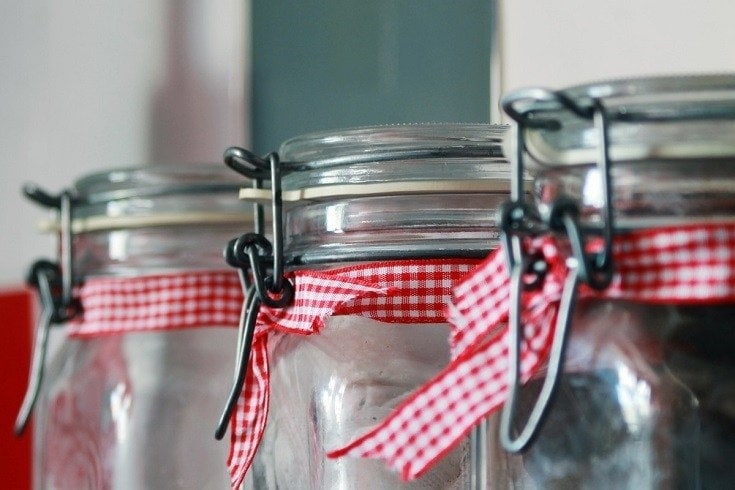
3. Go For Glass!
While plastic containers are lightweight and affordable, we recommend storing the food in glass if possible. Some plastics can leach chemicals into your dog’s food, so be sure they are BPA-free if you decide to go with plastic, or store it inside with the original bag. Plastics are also easily scratched and damaged and can then harbor bacteria and mold. Glass is easy to clean and perfectly food safe.
4. Clean Your Container
No matter the choice of material that you decide to go with, it is vital to keep it clean. After the food is finished, clean the container thoroughly with soapy water to avoid any hidden bacteria or mold, especially in plastic containers. Don’t forget to make sure the container is completely dry before refilling, as leftover moisture is a recipe for mold.
5. Use Within 6 weeks of Opening
No matter the expiration date on your food, we recommend using it within 6-8 weeks of opening. While some foods can last longer when stored properly, there as a higher chance of the food going rancid, stale, or moldy after this time. Of course, you can use your discretion, and if optimally stored, the food may last longer than this, depending on the brand.
6. Store It in a Cool, Dry Place
Heat and moisture are a perfect mix for mold. Even dry dog food has a certain amount of moisture and oils in it, and when combined with extreme heat, the food can quickly mold. Store the food in a dark, cool cupboard free from temperature fluctuations and moisture to keep it fresh and mold-free.
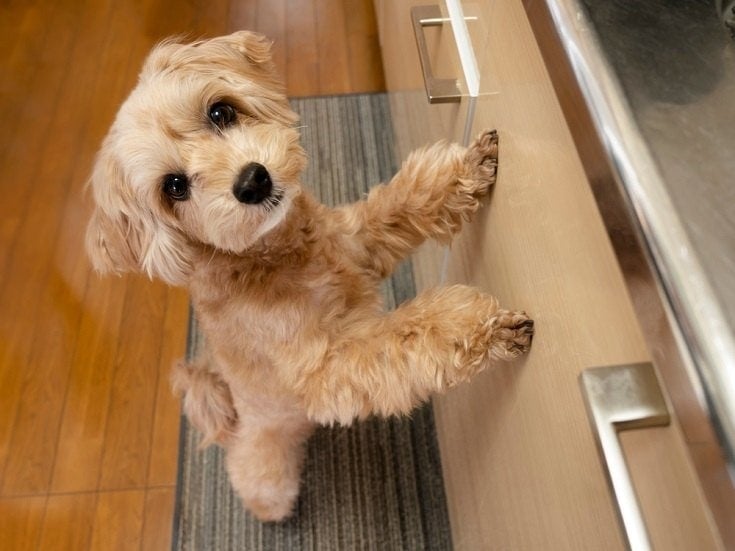
7. Freeze It!
For long-term storage, freezing your dog’s dry food is a great idea. Most dry dog food can be safely frozen for up to 6 months, just make sure it is sealed correctly in a freezer-safe bag or container. We recommend freezing it in smaller bags so you can conveniently take out a small section as needed.
8. Spread It Out
Storing your food in multiple small containers as opposed to one large container has multiple benefits. Smaller portions are easier to store and use when needed and will avoid potential contamination of food caused by opening and resealing frequently.
9. Avoid Mixing Old Food and New Food
It’s tempting to fill up a half-used container of older food with new food, but this should be avoided. If the old food contains any bacteria or mold, it will quickly move through the fresher food and contaminate it all. Also, mixing old food into the new food bag will potentially have the same effect.
10. Store It Off the Floor
Even when stored in an airtight container, pests like weevils and ants have their miraculous ways of getting into your dog’s food. Keeping the food off the floor will make it harder for pests to get inside and will discourage rats from nibbling open the food bags for a midnight snack.
11. Keep It Dry
Mold loves moisture, so your dog food should be kept dry at all times. Some dog owners like to soak dry kibble in water to make it softer for growing pups or older dogs with dental issues. This is fine but should only be done on the day that the food is given to them, and then any leftover food should be discarded.
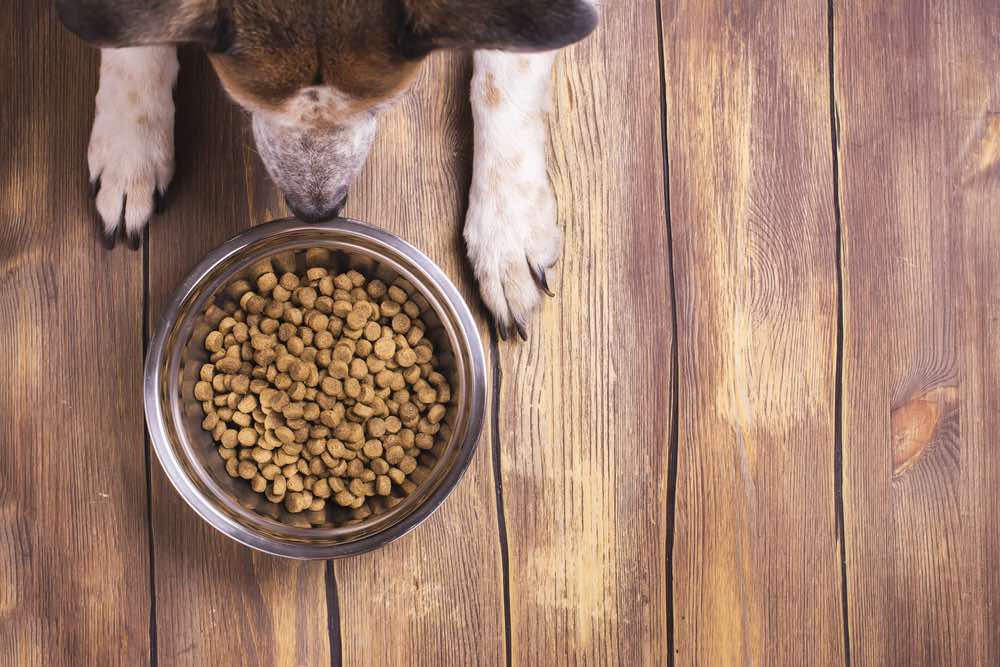
12. Wash Your Hands
Before feeding dry food to your dog, it’s a good idea to wash your hands first. Microscopic bacteria, mold, and fungal spores can easily attach themselves to your hands and then find their way into your dog’s food. Washing your hands is a simple and easy way to avoid contamination.
13. Use a Scoop
Using a scoop will greatly help avoid potential contamination. Avoid using your pet’s bowl to scoop out food, as it could spread bacteria into the food. A clean scoop that ideally stays inside the food container is best. This will also allow you to feed your dog the exact amount of food that they need and avoid over-feeding.
14. Avoid Food Dispensers
Food dispensers can be a convenient method of feeding your pooch, especially if you are away. However, this can quickly cause greedy dogs to become overweight, and the food in the dispenser is susceptible to bacteria and mold. If you do use a dispenser, we recommend filling it only with your dog’s daily food allowance and discarding any kibble left over at the end of the day. The dispenser must then be thoroughly cleaned.
15. Check the Expiration Date
A simple but often overlooked aspect is the expiration date. Dry dog food that is close to expiration needs to be used quickly, and expired food should be avoided. Some foods may last longer than the expiration date indicates, but this is risky.
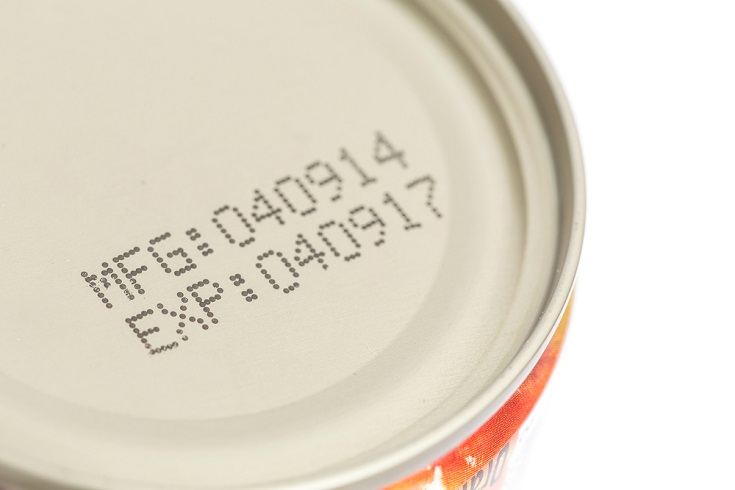
How long can dry dog food be stored?
As a general rule, most commercial dry dog foods will last 12-18 months after the date of manufacture if left unopened. Bear in mind that the indicated expiration date is how long the food will last unopened, but after being exposed to heat, air, and moisture, this is dramatically reduced. Some nutrition experts recommend using the food within a few weeks after opening, but this can vary depending on the food itself.
How do you know if your dog food has gone bad?
There are some obvious indications of rancid dog food, while other signs may be more subtle. Mold is a sure sign and usually easy to see, but the early stages of mold can be easily missed. If you suspect that there may be mold on an older batch of food, take a close look for any fluff-like growth. If the food has gone off-color and has turned green or black, this is a certain sign of either mold or rancid food, and you should not give it to your pooch. If the food smells musty or sour, it is likely rancid too.
The final sign is if your dog won’t eat the food. Dogs have an incredible sense of smell that is far superior to humans, and they will be the first to know if something’s not right. If they usually gobble it up at dinner time and are now more cautious or not eating it at all, it’s time for a replacement.
Final Thoughts
Not only are great ingredients and good quality food important for your dog’s health, but properly stored food is also essential. Thankfully, storing your dog’s food properly is relatively easy, and if you diligently follow the steps outlined above, you will be well on the way to ensuring fresh, nutritious food for your pooch.
Featured Image Credit: Javier Brosch, Shutterstock
Contents
- The 15 Tips to Store Dry Dog Food Long Term:
- 1. Keep It in the Original Bag
- 2. Use an Airtight Container
- 3. Go For Glass!
- 4. Clean Your Container
- 5. Use Within 6 weeks of Opening
- 6. Store It in a Cool, Dry Place
- 7. Freeze It!
- 8. Spread It Out
- 9. Avoid Mixing Old Food and New Food
- 10. Store It Off the Floor
- 11. Keep It Dry
- 12. Wash Your Hands
- 13. Use a Scoop
- 14. Avoid Food Dispensers
- 15. Check the Expiration Date
- How long can dry dog food be stored?
- Final Thoughts

